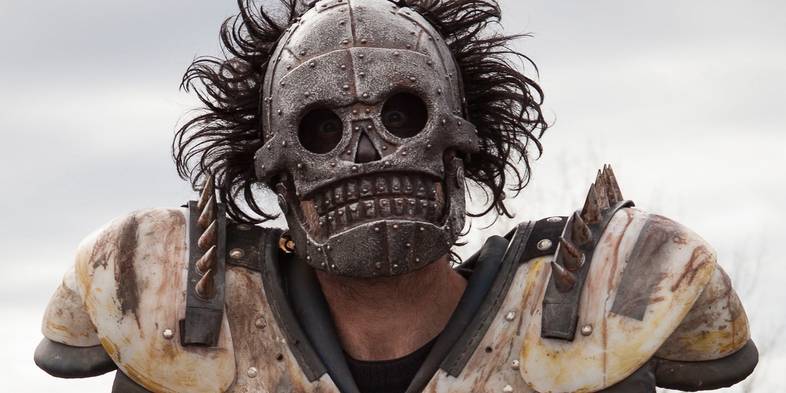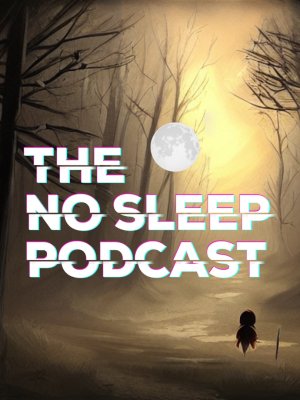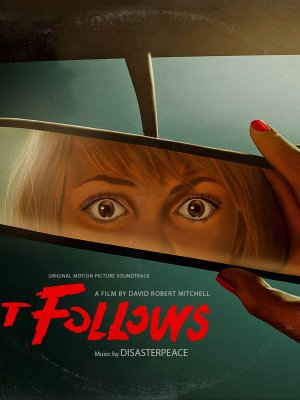Best Movies about Disasters and Apocalypse
ZARDOZ (1974)
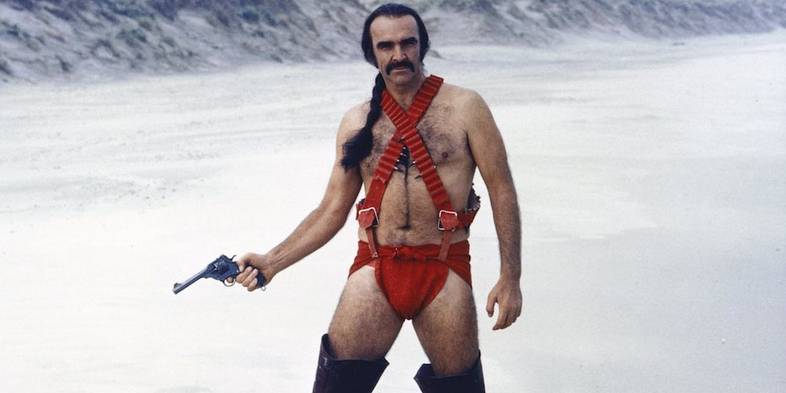
The Gun is good! The Penis is evil! The Penis shoots Seeds! So proclaims the giant levitating stone head at the beginning of Zardoz – one of the craziest sci-fi movies ever. Set in a post-apocalyptic world of 2293, Zardoz follows a barbarian named Zed, played by Sean Connery dressed in latex underwear and a braided ponytail. Zed discovers a hidden society of immortal humans hiding from the remains of mankind. While immortal Consuella (Charlotte Rampling) urges Zed’s destruction, others want to examine this virile savage. This will prove to be their undoing.
Made in 1974 as an Irish-American co-production, Zardoz was a passion project of the acclaimed filmmaker John Boorman, known for such movies as Point Blank (1967), Deliverance (1972) and Excalibur (1981). Zardoz is one of those rare movies that can be easily watched both as a cult sci-fi film and so-bad-it’s-good entertainment.
TURBO KID (2015)
Turbo Kid fells like a feverish fantasy of a 10-year-old who spent way too much time watching Mad Max and BMX Bandits. The hero of this post-apocalyptic adventure is The Kid (Munro Chambers), a teenager struggling to survive in the ruins of the alternate 1997. The perpetually-dry Wasteland is ruled over by the sadistic overlord Zeus (Michael Ironside) who liquidates – Literally! – his enemies. With a help of the mysterious girl named Apple (Laurence Leboeuf ), The Kid will face Zeus and his BMX-riding henchmen led by fearsome Skeletron (Edwin Wright).
Turbo Kid is a nostalgic, albeit surprisingly gory, spoof of the weird and wonderful detritus of the 1980s pop culture: from bad synth-pop music to Michael Ironside and BMX bikes. Written and directed by François Simard, Anouk Whissell and Yoann-Karl Whissell, Turbo Kid was filmed as a Canadian-New Zealand co-production. It premiered on 2015 Sundance Film Festival and was released in August of the same year.
ESCAPE FROM NEW YORK (1981)
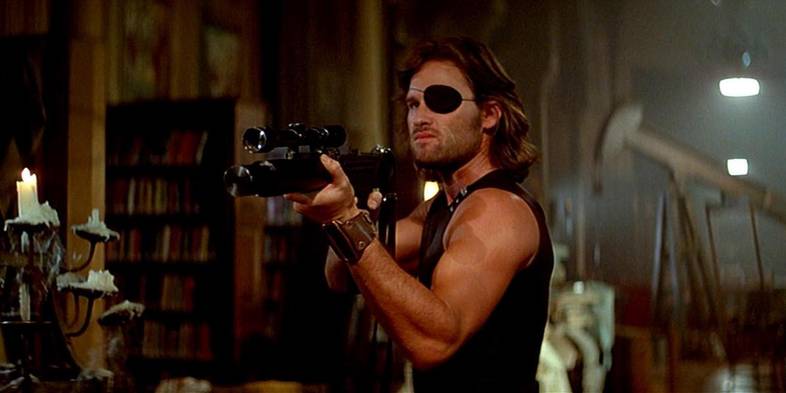
In a not-too-distant future of 1997, USA has become a police state. The ruins of New York have been turned into a giant prison isolated from the mainland with mine fields and a huge wall. But after the President (Donald Pleasance) crash lands on Manhattan, he’s taken hostage by the Duke of New York (Isaac Hayes) who wants the government to release all the inmates. It’s up to Snake Plissken (Kurt Russell), himself a convicted criminal, to save President’s life… or die trying.
Although Escape From New York is set in a dystopian fascist regime, you could never tell from the look of it. With its desolate streets and derelict buildings populated by lunatics and street gangs, Escape From New York feels like an urban version of Mad Max. John Carpenter filmed this sci-fi film for mere $6 million, but the movie proved a commercial success and inspired a host of other creators, from cyberpunk writer William Gibson to English filmmaker Neil Marshall.
PLANET OF THE APES (1968)
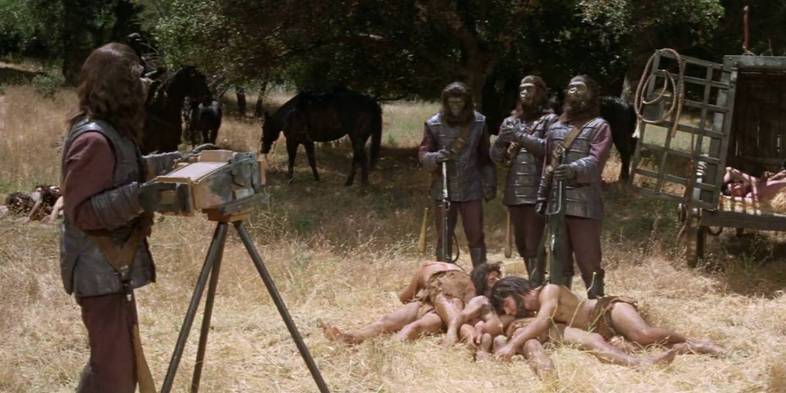
“Get your stinking paws off me, you damned dirty ape!” Even if he had accomplished nothing else in his long and successful film career, this line by Charlton Heston would grant him cinematic immortality. In Planet of the Apes, Heston plays George Taylor, an American astronaut stranded on a world where apes developed a primitive civilization while the barbaric human beings live like animals. With a screenplay co-written by the Twilight Zone creator Rod Serling, you just know there’s a twist coming. The final reveal in Planet of the Apes turns it from a political satire into a post-apocalyptic film, firmly cementing its status as one of the classic sci-fi movies.
Planet of the Apes was based on a satirical sci-fi novel La Planète des Singes by the French writer Pierre Boulle. When the novel was published in 1963, no one could have imagined that it would become a basis for a media franchise that – to this date – includes seven movies, two TV shows and a series of comic books.
STALKER (1979)
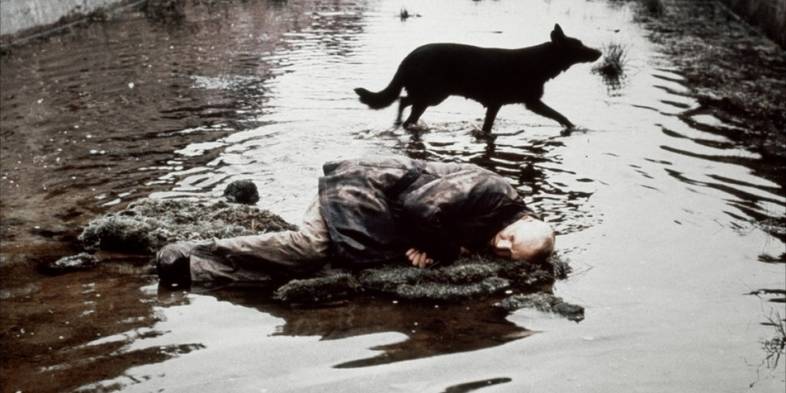
Russian sci-fi art film Stalker has a dubious honor of being the only title on this list that, in a way, actually came true. Its story takes place in a devastated industrial landscape known simply as the Zone. An expert guide called Stalker (Aleksandr Kaidanovsky) leads the melancholic Writer (Anatoli Solonitsyn) and a Professor (Nikolai Grinko) through the dangers of the seemingly sentient Zone to a hidden room that fulfills people’s deepest wishes.
Stalker was directed by the great Russian filmmaker Andrei Tarkovsky (Solaris). Its screenplay was written by sci-fi writers Boris and Arkady Strugatsky, based on their novel Roadside Picnic. Widely considered a cinematic classic, Stalker came to terrifying life after the 1986 Chernobyl Nuclear Power Plant disaster. Soviet authorities evacuated entire population from the so-called “Zone of Alienation,” leaving behind landscape not unlike the one in the movie. In 2007, Ukranian game developers created popular open world first person shooter S.T.A.L.K.E.R.: Shadow of Chernobyl, drawing inspiration from Stalker, Roadside Picnic and the Chernobyl disaster.
DOOMSDAY (2008)
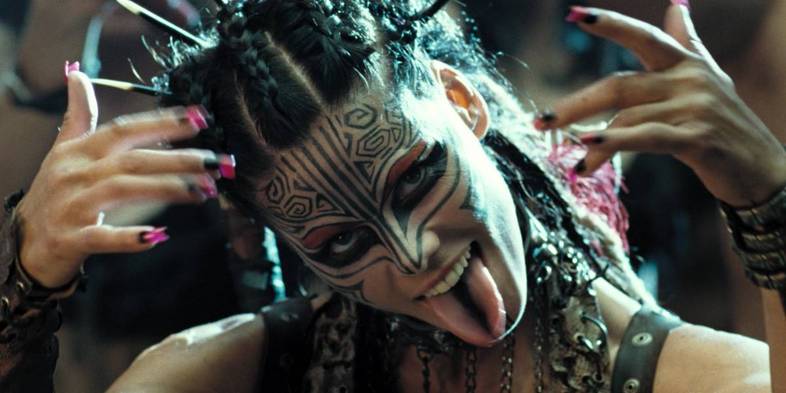
In the near future, entire Scotland got walled off into a giant quarantine zone after a deadly plague ravaged its population. Thirty years later, there’s a new outbreak of the pandemic in England. The only hope for a cure may lie with the survivors inside the quarantine. Major Eden Sinclair (Rhona Mitra) is sent there to find Dr. Marcus Kane (Malcolm McDowell) who worked on a vaccine for this deadly disease. However, the ruins of Scotland are populated by the cannibalistic marauders led by Sol (Craig Conway).
If you’re going to steal, steal from the best. Neil Marshal’s Doomsday is a fun mix of action and horror, but isn’t nearly as good as the classics that so obviously inspired it: most of all George Miller’s Mad Max and John Carpenter’s Escape from New York. Released in 2008, Doomsday received mixed reviews
TIME OF THE WOLF (2003)
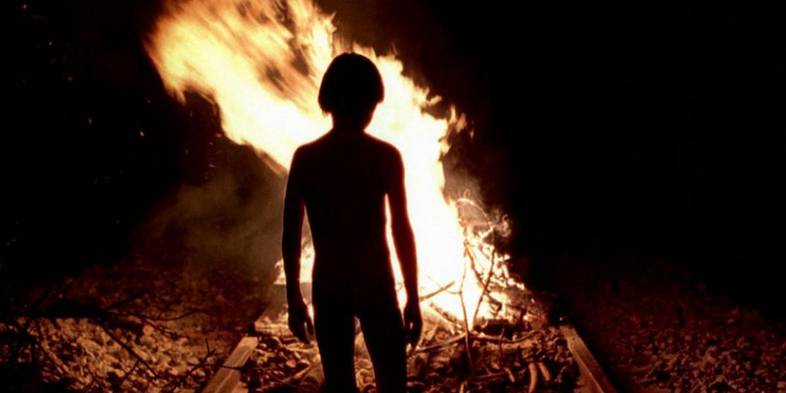
Austrian filmmaker Michael Haneke doesn’t pull punches in his movies, as anyone who watched his Funny Games can attest. While most of the titles on this list are escapist fantasies, Time of the Wolf offers an unflinching look at the cruel human drama in a rapidly-collapsing society.
The film follows Georges (Daniel Duval) and Anne (Isabelle Huppert) Laurent and their children as they flee the city from an unspecified disaster. But countryside proves equally dangerous, with villagers looking only for themselves and robbers taking all of Laurents’ possessions. The exact nature of the apocalypse is left deliberately vague: the viewer knows only that most of the water and food is toxic. Survivors start gathering at the old train station, hoping for some sort of rescue. Instead, as time goes on, they slowly descend to their most basic, savage selves.



